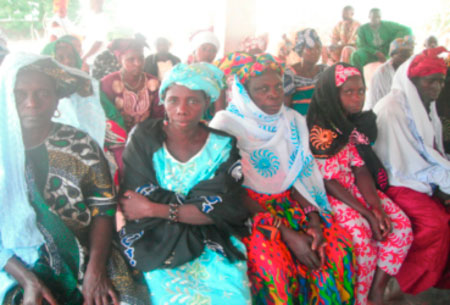
Village Development Committees in eight circuits within Central River Region north were recently sensitised on the concept of Primary Health Care.
The sensitisation campaign was held in various meetings in the region courtesy of a UNICEF funding.
Speaking at the meetings, Ebba Secka, regional principal nursing officer, said it was in 1998 that world leaders met at Alma-ata in Russia and conceptualised the primary health care (PHC) strategy, and following this conference individual countries adopted the strategy and for The Gambia in 1979.
The Gambia health system, according to him, adopted the PHC strategy as indicated in the Gambia Health Policy: “Health is Wealth”.
This system, he continued, is in three tiers; that is, Primary Level Village Health Services and Community clinic, Secondary Level-Minor and Major Health Centres and Tertiary-Level Hospitals and the referral teaching hospital.
However, he said that health is seen as a resource for everyday life, and not only the objective of living.
Health is a positive concept emphasising social and personal resources, as well as physical capacities.
Health, he told his audience, is defined as state of physical, metal and social wellbeing, but not merely the absence of diseases or infirmity, adding that this definition is very ambitious and therefore a healthy person is the one not examined enough.
Therefore, striving to attain better health requires the participation of all individuals, families, communities and the nation as a whole, he says.
He revealed that Central River Region (CRR) is the biggest health region in The Gambia with very poor health indicators, adding that CRR has a current projected population of 266,270 as of December 2012 (2003 census projected data.)
PHC is an essential health care base of practical, scientifically sound and socially acceptable method and technology made universally accessible to individuals and families in the community through their full participation and at the cost the country can afford to maintain at every stage of their development in the spirit of self-reliance and self-determination.
Principles of health care, he stated, is one of total human development, social, educational and economic, adding that health care should be available and accessible to all communities.
According to him health care should be affordable, acceptable and appropriate thus relevant to the main health problems of an area.
Malick Choi, senior community health nursing tutor at regional health team for CRR, said strategies to implement PHC include intersectoral collaboration that calls for collaboration of all departments, agriculture, community, education, communication, etc.
Prevention of diseases and promotion of health, availability of basic infrastructure, referral system should be an established referral networking system; village health workers, TBAs, and VDCs should be selected and trained to work in the community; health education is fundamental and should be ongoing; full community participation is required as well as provision of essential drugs.
Alpha Mballow, regional nutrition field officer who doubles as the facilitator, said national nutrition agency and the ministry of health collaborate to support the PHC villages.
He added that PHC villages are clustered into circuits and the sensitization trainings are done in cluster based in each circuit.
Mr Sarjo Sanneh, community development assistant, said the formation of VDCs is required by the Local Government Act 2002 as an entry point to any community.
Village Development Committee (VDC) is a representative local committee unanimously selected by villagers to lead and serve as entry point for all development issues of particular village or community.
VDC required membership 12-15 people and the representation must come from all Kabilos; ladies should be represented by a ladies president; there should be head of the youths, Village Health Workers, Traditional Birth Attendance, any other active member of the community deemed fitting, and alkali and Imams serve as advisers in the committees.
He said VDCs are selected through a village meeting, the roles and responsibilities of a VDC clearly explained, participation should be voluntary, selection process should be objective, and an executive should be formed right away.
Mustapha A.M. Joof, community health nurse at Njau circuit, said PHC can only be effective if the VDCs take their responsibilities and urge them to do so for the interest of their communities.


